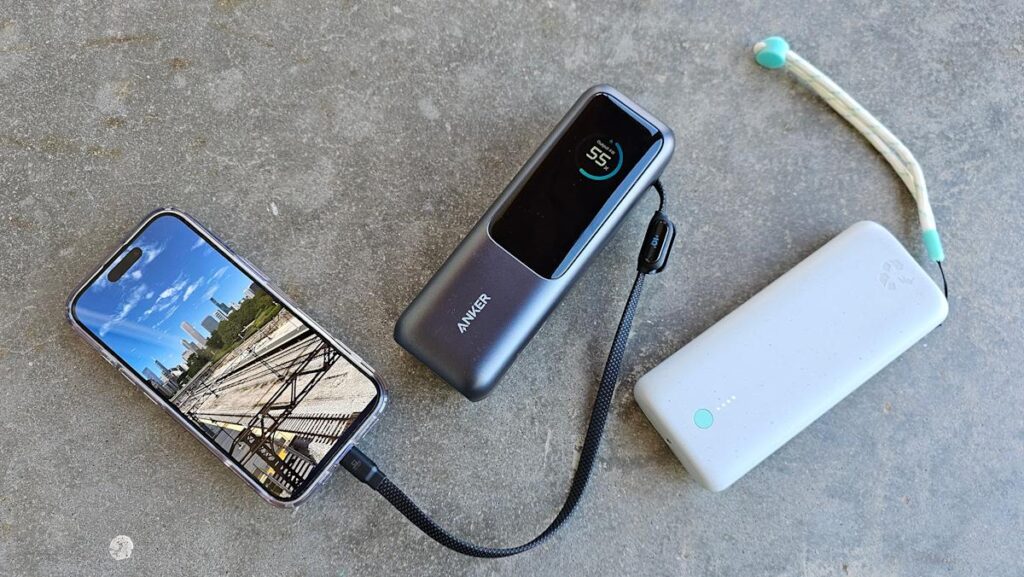
Travel Electronics Charging Solutions: Complete Guide to Keep Your Devices Powered on the Go
Travel Electronics Charging Solutions: Complete Guide to Keep Your Devices Powered on the Go
Table of Contents
Introduction: The Travel Charging Challenge
Planning a trip often involves packing a variety of electronic devices—smartphones, tablets, laptops, smartwatches, and more. But without reliable travel electronics charging solutions, your digital companions can quickly become useless paperweights. Whether you’re heading across the country or around the world, having the right charging accessories is essential.
The Modern Traveler’s Power Needs
Today’s travelers need more than just a single charger. A comprehensive travel electronics charging solution typically includes a combination of high-capacity power banks, multi-device charging stations, appropriate cables, and potentially international adapters. This article will guide you through selecting the right mix of products for your specific travel needs.
How to Select the Perfect Power Bank for Travel
The cornerstone of any effective travel electronics charging solution is a reliable power bank. Over the years, I’ve tested dozens of portable batteries and brought many on planes, trains, and long car rides. The right power bank can mean the difference between staying connected and being stranded with dead devices.
When selecting a power bank for travel, focus on three critical factors: capacity, weight, and connection types. Each plays a crucial role in determining which option will best serve your specific travel needs.
Understanding Capacity Requirements
Most portable chargers list their capacity in milliamp hours (mAh). For effective travel electronics charging solutions, look for:
- Minimum useful capacity: 5,000mAh is the bare minimum, but this won’t even get most smartphones to 50% charge
- Recommended capacity: 10,000mAh or higher for day trips and light use
- Power users: 20,000mAh or higher if you need to charge multiple devices several times
An important note about capacity: there’s not a direct one-to-one correlation between a power bank’s capacity and how much charge it delivers to your devices. Due to voltage conversions, heat loss, and the power bank’s own operation, a 10,000mAh power bank won’t fully charge a 5,000mAh smartphone battery twice. Expect some efficiency loss in the conversion process.
Weight Considerations for Travelers
Weight is directly related to capacity when it comes to travel electronics charging solutions. Higher capacity batteries will invariably weigh more:
- 10,000mAh banks: Typically weigh around 6-8 ounces (170-225g)
- 20,000mAh banks: Usually weigh 12-16 ounces (340-450g)
- 25,000+mAh banks: Can weigh up to 2-2.5 pounds (900-1130g)
If you’re concerned about keeping your luggage light, select the smallest capacity that will meet your needs. However, remember that the largest TSA-compliant batteries (around 27,000mAh) still only weigh about 2.5 pounds—a reasonable tradeoff for ensuring all your devices stay powered throughout your trip.
Essential Connection Types
The final consideration for your travel electronics charging solution is connectivity. Modern power banks typically include:
- USB-C ports: Now standard on most power banks, offering faster charging
- USB-A ports: Still useful for older devices and accessories
- Built-in cables: Some banks feature integrated cables for convenience
- Wireless charging: Higher-end options may include Qi wireless charging pads
Ensure your power bank has the right connections for all your devices. Even with USB-C becoming standard, you might need USB-A ports for older accessories like smartwatch chargers. Always pack the appropriate cables for each device, even if your power bank has built-in cables as a backup.
Air Travel Rules for Batteries and Charging Accessories
Understanding the regulations around traveling with batteries is crucial for any travel electronics charging solution. Airlines and aviation authorities have specific rules to ensure safety, and these vary depending on whether you’re flying domestically or internationally.
TSA and FAA Regulations
Current TSA and FAA rules for travel electronics charging solutions include:
Key TSA Battery Rules
- Carry-on only: All spare batteries, including power banks, must be in your carry-on luggage, never in checked bags
- Capacity limits: Batteries must be rated at 100 watt-hours or lower (approximately 27,000mAh)
- Quantity: No limit on the number of batteries, as long as they’re for personal use
- Protection required: Batteries must be protected from damage and short-circuiting
Regular chargers, wall adapters, cables, and standard alkaline batteries (AA, AAA) can fly in either checked or carry-on luggage. However, always remember that TSA agents have the final say on what can and cannot board the plane.
International Battery Regulations
For international travel, your travel electronics charging solutions must comply with both your departure and return flight regulations. Most major international airports follow similar guidelines to the TSA, based on International Civil Aviation Organization (ICAO) policies:
- Delhi, Haneda, Istanbul, Heathrow, Dubai: All require spare batteries to be in carry-on luggage only
- Capacity limits: Most limit batteries to 100Wh, though ICAO actually allows up to 160Wh
- Documentation: Some countries may require proof of battery capacity (Wh rating)
Always check the specific regulations for all airports on your itinerary when planning your travel electronics charging solution strategy, as requirements can change and may vary by country.
Top Travel Electronics Charging Solutions
Based on extensive testing and real-world travel experience, here are the top travel electronics charging solutions across several categories to suit different needs and budgets.
High-Capacity Options
Anker Laptop Power Bank (25,000mAh, 100W)
Despite its name, this versatile power bank is ideal for all types of devices. With a generous 25,000mAh capacity, it can recharge a smartphone nearly four times, a tablet more than twice, and add hours of life to a laptop. Its key features include:
- Two built-in USB-C cables (one retractable)
- Digital display showing remaining charge percentage
- Fast charging with 165W max output
- Durable construction for travel reliability
The downsides include its $110 price tag and 1.3-pound weight, but for serious travelers needing a comprehensive travel electronics charging solution, it’s worth the investment.
Budget-Friendly Solutions
Anker Nano 3-in-1 Portable Charger (10,000mAh, 30W)
At under $50, this combination wall adapter and power bank offers excellent value as a travel electronics charging solution. Key features include:
- Functions as both AC plug charger and portable battery
- Built-in USB-C cable that forms a handle loop
- Digital display for remaining charge monitoring
- Fast charging capabilities for most smartphones
- Compact design that combines three devices in one
This 3-in-1 solution is perfect for travelers seeking to minimize the number of accessories while maintaining charging capability both in-room and on the go.
Nimble Champ Pro (20,000mAh)
This environmentally friendly option from a B Corp and Climate Neutral certified company offers:
- Distinctive speckled finish that’s easy to spot in a bag
- 20,000mAh capacity sufficient for multiple tablet charges
- Convenient carrying strap for easy handling
- Two USB-C ports for simultaneous charging
- LED indicators for charge level monitoring
At around $100, it’s a mid-range option ideal for environmentally conscious travelers looking for a reliable travel electronics charging solution without the bulk of larger options.
Phone-Specific Chargers
Anker MagGo Power Bank (10,000mAh, 15W)
For iPhone users seeking a specialized travel electronics charging solution, this Qi2-enabled magnetic charger offers:
- Magnetic attachment to MagSafe-compatible iPhones
- Included stand for hands-free viewing while charging
- Side display indicating remaining charge
- Additional ports for non-magnetic device charging
- 10,000mAh capacity sufficient for multiple phone charges
Though priced at around $90, this specialized option provides unique functionality for iPhone users who want to use their devices while charging on the go.
Multi-Device Charging Stations
Anker MagGo 3-in-1 Charging Station
For hotel room charging, a foldable multi-device solution keeps your nightstand organized. This travel electronics charging solution offers:
- Simultaneous charging for iPhone, AirPods, and Apple Watch
- Foldable design that collapses to approximately mouse-size
- Qi2-certified for fast wireless charging
- Stable stand functionality for device viewing
- Compact form factor ideal for packing
At around $99, this is an excellent option for Apple ecosystem users traveling with multiple devices.
International Travel Adapters
Beshon Travel Plug Adapters
When traveling internationally, power adapters are essential components of your travel electronics charging solution. These adapters offer:
- Available versions for different regions (Europe, Japan, Australia, etc.)
- Two-pack for simultaneous device charging
- Multiple integrated charging options (AC plugs, USB-C, USB-A)
- Compact design for efficient packing
- Affordable price point (approximately $13-20)
Before purchasing, check the International Electrotechnical Commission (IEC) map to identify which plug standard is used in your destination country.
Conclusion: Staying Powered on Your Journey
Creating an effective travel electronics charging solution strategy requires balancing capacity needs, weight limitations, connection types, and travel regulations. For most travelers, a combination of a high-capacity power bank for all-day power, a multi-device charging station for overnight use, and appropriate adapters for international travel will provide comprehensive coverage.
Recommended Travel Electronics Charging Kit
- Domestic travel: One 20,000+mAh power bank + one smaller 10,000mAh bank + a multi-device charging station
- International travel: Same as domestic, plus appropriate country-specific adapters
- Essential accessories: Extra cables for each device type, including at least one USB-C to Lightning and one USB-C to USB-C
- Organization: Cable organizer or pouch to keep everything neat and accessible
By applying these guidelines to select the right travel electronics charging solutions for your specific needs, you can ensure your devices remain powered throughout your journey—whether you’re taking photos, navigating unfamiliar streets, working remotely, or just staying connected with loved ones back home.
Remember that regulations can change, so always check current airline and destination country policies before traveling with batteries and charging devices. With proper planning, you’ll never have to face the frustration of a dead device when you need it most.





